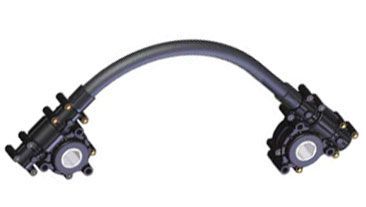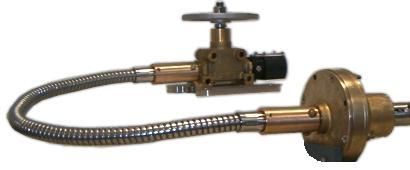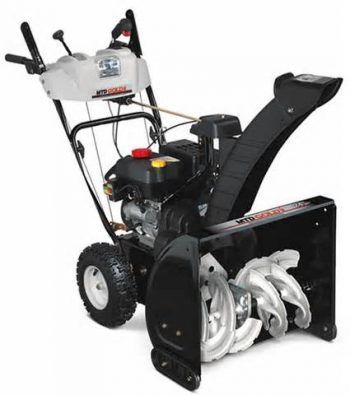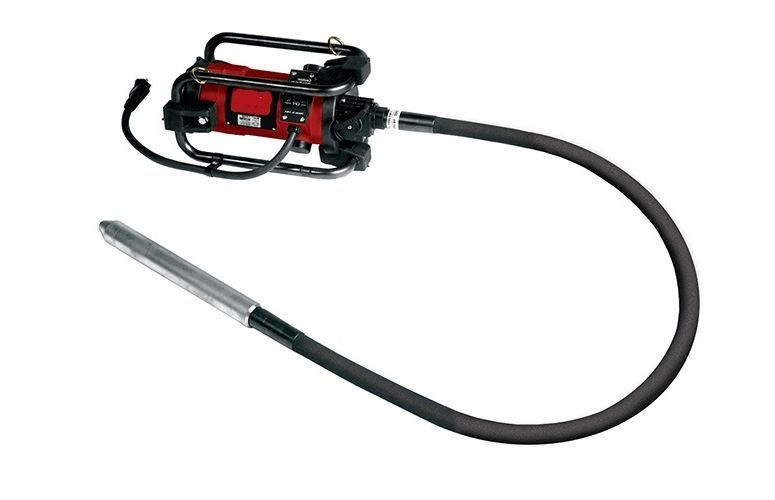Flexible Shaft
Product Highlights
- Tested & Proven Reliability
- Highly Dependable Solutions
- Made in the USA

- Built-in Quality
- World Class Customer Service
Elliott Flexible Shafts are designed to transmit power or rotary motion through a curved path, either between fixed shafts or shafts having relative motion.
They can overcome problems of misalignment, absorb and isolate vibration, and simplify power transmission designs and applications. Elliott Flexible Shafts can easily withstand the shock of sudden load changes due to starting and stopping. They will effectively and reliably transmit power to a driven element that must move during operation, even around corners or into machines while allowing for a high degree of freedom in the location of drive sources, whether mechanical, such as electric motors or manual.
Using Flexible Shafts to solve complex drive problems can reduce design time, lower initial assembly and maintenance cost safely without the use of exposed universal joints, gears, pulleys or couplings. Consider Elliott Flexible Shafting early in your design to take full advantage of this unique technology to solve demanding drive problems efficiently, economically and with the flexibility you need. Put Elliott e-novation to work but contacting us.
FAQ
It is a complete mechanism capable of transmitting rotary power or motion between two points that need not be co-linear. They are available in a wide range of configurations and materials to meet your needs. Flex Shafts are very durable and can operate in demanding environments, some requiring continuous operation at very high speed. There are two primary types of Flex Shafts:
Power Drive: Designed for continuous operation at speeds exceeding 100 RPM where torque is carries in one direction of rotation. It may also be used where intermittent operation is an application requirement.
Remote Control: Designed for intermittent operation at speeds of 100 RPM or less. Remote Control Flex Shafts generally carry handle higher torque than Power Drive Flex Shafts and can rotate either clockwise or counterclockwise without adverse effects.
Contact one of our application engineers to determine if the torque, speed, and environment of your application are appropriate for Flexible Shafting. Over the past 140 years, Elliott has designed Flex Shafts for literally THOUSANDS of applications ranging from military to commercial to power plants and beyond.
Elliott manufactures a wide array of Push/Pull Cables and Controls. Similar to our Flex Shafts, Elliott’s Push/Pull Cables transmit linear motion from one location to another. They are easy to install and among the industry’s highest rated. Our application engineers work with you to determine the best mounting configurations, travel/stroke length, and overall length. Contact Us for more info.
Generally, a Flex Shaft is made up of the following: core, casing, motor connection, fitting, and ferrule. Some systems will have all of these components while others may have only a few.
CORE: Wire wound in layers in opposing directions around a center wire.
CASING: Flexible conduit that supports the core during operation. Many of Elliott’s Flex Shafts come with a casing comprised of a steel liner, steel and cloth reinforcing braids and a rubber cover.
MOTOR CONNECTION: This is what attached the Flex Shaft to a power source. There are many different motor connections ranging from the simple single fitting to a more complex multi-faceted system.
FITTING: A core fitting is attached directly to the core to mate to the power source.
FERRULE: A ferrule attaches to the casing to support it in a uniform bend and to keep it from rotating.
Our Core Shaft Chart is a good place to start. You should know the power you need to transmit, operating speed, direction of rotation, minimum bend radius and torsional deflection. We can help and are even willing to figure it out for you. Our Application Engineers are ready to review and recommend the Flex Shaft right for you. Contact Us for more info!









